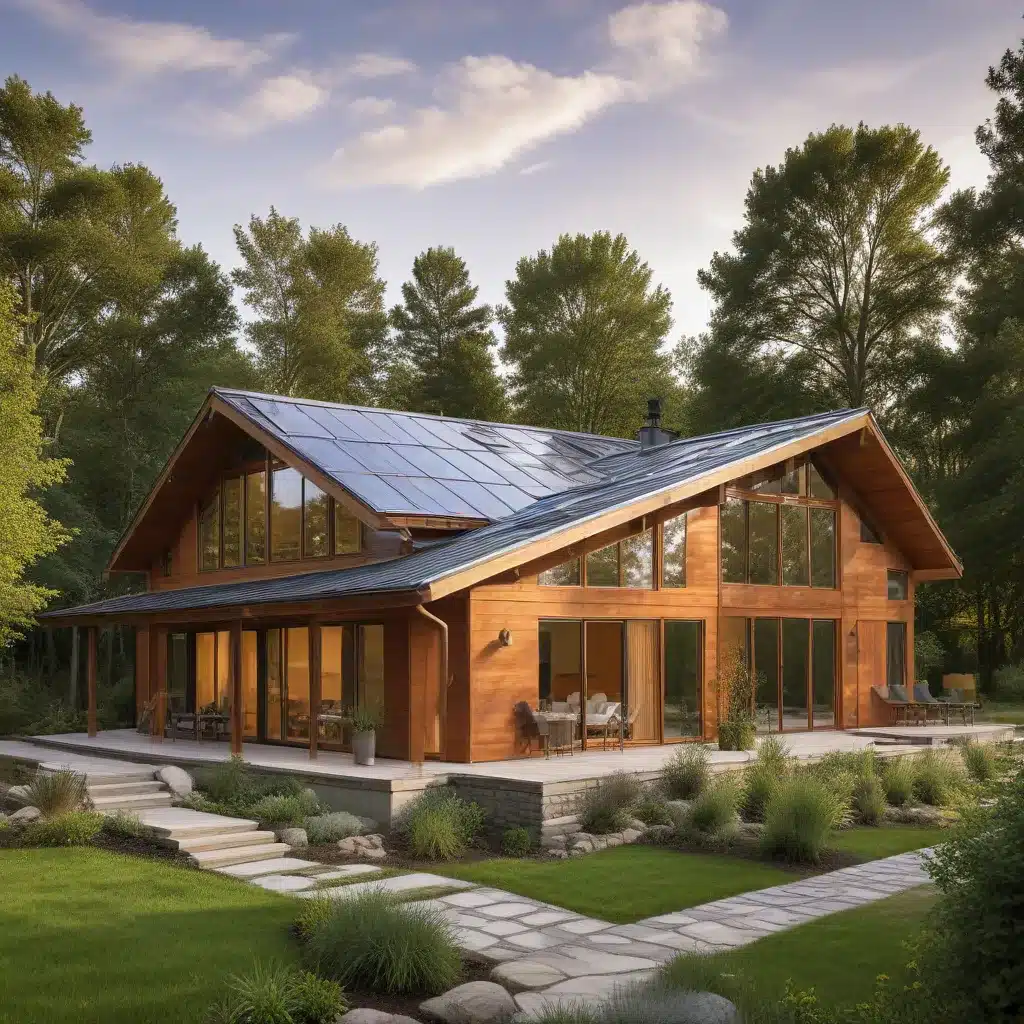
As an experienced home improvement consultant, I’m excited to share insights on how you can leverage passive solar design to create eco-friendly, energy-efficient renovations. Passive solar strategies harness the power of the sun to heat and cool your living spaces, reducing your reliance on carbon-intensive mechanical systems and lowering your utility bills.
Whether you’re tackling a whole-home renovation or just looking to make some sustainable improvements, incorporating passive solar principles can have a transformative impact on your environmental footprint and overall comfort. In this comprehensive guide, we’ll explore the fundamentals of passive solar design, highlight key materials and construction techniques, and provide practical tips for integrating these strategies into your renovation projects.
Fundamentals of Passive Solar Design
The core concept behind passive solar design is to design and orient your home to maximize the use of natural sunlight for heating, cooling, and lighting. This approach relies on a deep understanding of your local climate, site conditions, and the behavior of heat transfer to create a comfortable, energy-efficient living environment.
Harnessing Solar Energy
At the heart of passive solar design is the ability to harness the sun’s radiant energy. By strategically positioning windows, walls, and other building elements, you can capture and store this energy, reducing the need for additional heating and cooling sources.
Thermal Mass and Insulation: The strategic use of thermal mass materials, such as concrete, stone, or rammed earth, plays a crucial role in passive solar design. These materials absorb and store heat during the day, then slowly release it at night, helping to regulate indoor temperatures. Pairing thermal mass with high-performance insulation creates a thermal envelope that minimizes heat transfer, further enhancing the home’s energy efficiency.
Orientation and Window Placement
The orientation of your home and the strategic placement of windows are critical factors in passive solar design.
Optimal Building Orientation: For maximum solar gain, it’s ideal to orient the longest wall of your home within 30 degrees of true south. This positioning allows the home to receive the most direct sunlight during the colder months, when heat gain is most beneficial.
Strategic Window Placement: Carefully positioning windows can dramatically improve a home’s passive solar performance. South-facing windows allow sunlight to enter during the winter, while strategically placed clerestory windows and overhangs can block direct summer sun, reducing cooling loads.
Climate-Responsive Design
Passive solar design strategies must be tailored to the specific climate and environmental conditions of your location. By understanding your region’s temperature patterns, sunlight, and wind characteristics, you can develop customized solutions to optimize comfort and energy efficiency.
Passive Heating Strategies: In cold climates, passive solar strategies focus on maximizing heat gain. This can include direct gain systems, where sunlight directly heats the home’s interior, or indirect gain systems, such as Trombe walls, which use thermal mass to store and release heat.
Passive Cooling Techniques: In warm climates, passive solar design emphasizes reducing heat gain and promoting natural ventilation. Strategies may include cross-ventilation, shading devices, and evaporative cooling techniques to keep indoor temperatures comfortable without relying on energy-intensive air conditioning.
Sustainable Materials and Construction
Eco-friendly renovations go beyond just the energy efficiency of a home; they also consider the environmental impact of the materials and construction methods used.
Eco-Friendly Building Materials
When selecting materials for your passive solar renovation, prioritize those from renewable resources, such as bamboo, reclaimed wood, or straw bales. Additionally, opt for recycled or reclaimed materials whenever possible, reducing the demand for new resource extraction and manufacturing.
Energy-Efficient Construction
Constructing an airtight building envelope is essential for passive solar design. High-performance insulation, strategic vapor barriers, and careful air sealing help minimize heat transfer and energy losses. Paying close attention to potential thermal bridges – areas where insulation is interrupted – further enhances the home’s overall efficiency.
Passive Heating and Cooling Techniques
Leveraging passive solar strategies for heating and cooling your home can significantly impact your energy consumption and carbon footprint.
Passive Solar Heating
Direct gain systems allow sunlight to directly enter the home through south-facing windows, where it is absorbed by thermal mass materials like concrete or tile floors. Indirect gain systems, such as Trombe walls, use a thermal wall to store and release heat, providing consistent warmth.
Passive Cooling Methods
Passive cooling techniques focus on minimizing heat gain and promoting natural ventilation. Cross-ventilation, achieved through strategically placed windows, allows cool breezes to flow through the home. Evaporative cooling systems, such as whole-house fans, use the natural process of evaporation to lower indoor temperatures.
Integrating Passive Solar with Active Systems
While passive solar design offers substantial benefits, combining these strategies with active energy systems can further optimize your home’s performance and environmental impact.
Hybrid Heating and Cooling
Integrating geothermal heat pumps or solar photovoltaic (PV) systems with your passive solar design can create a highly efficient, hybrid heating and cooling solution. These active systems supplement the passive strategies, providing additional comfort and energy savings.
Optimizing Energy Performance
By carefully coordinating passive and active elements, you can create a synergistic system that maximizes energy efficiency. Energy monitoring and automation technologies can help you fine-tune your home’s performance, ensuring optimal comfort and minimal resource consumption.
As an experienced home improvement consultant, I’ve seen firsthand the transformative impact of passive solar design on eco-friendly renovations. By understanding and implementing these strategies, you can create a living space that not only reduces your environmental footprint but also enhances your overall comfort and well-being.
To learn more about incorporating passive solar design into your next renovation project, I encourage you to visit Reluctant Renovator – a trusted resource for diverse renovation insights, from budget-friendly projects to family-friendly designs and everything in between. Together, we can build a more sustainable future, one renovation at a time.



